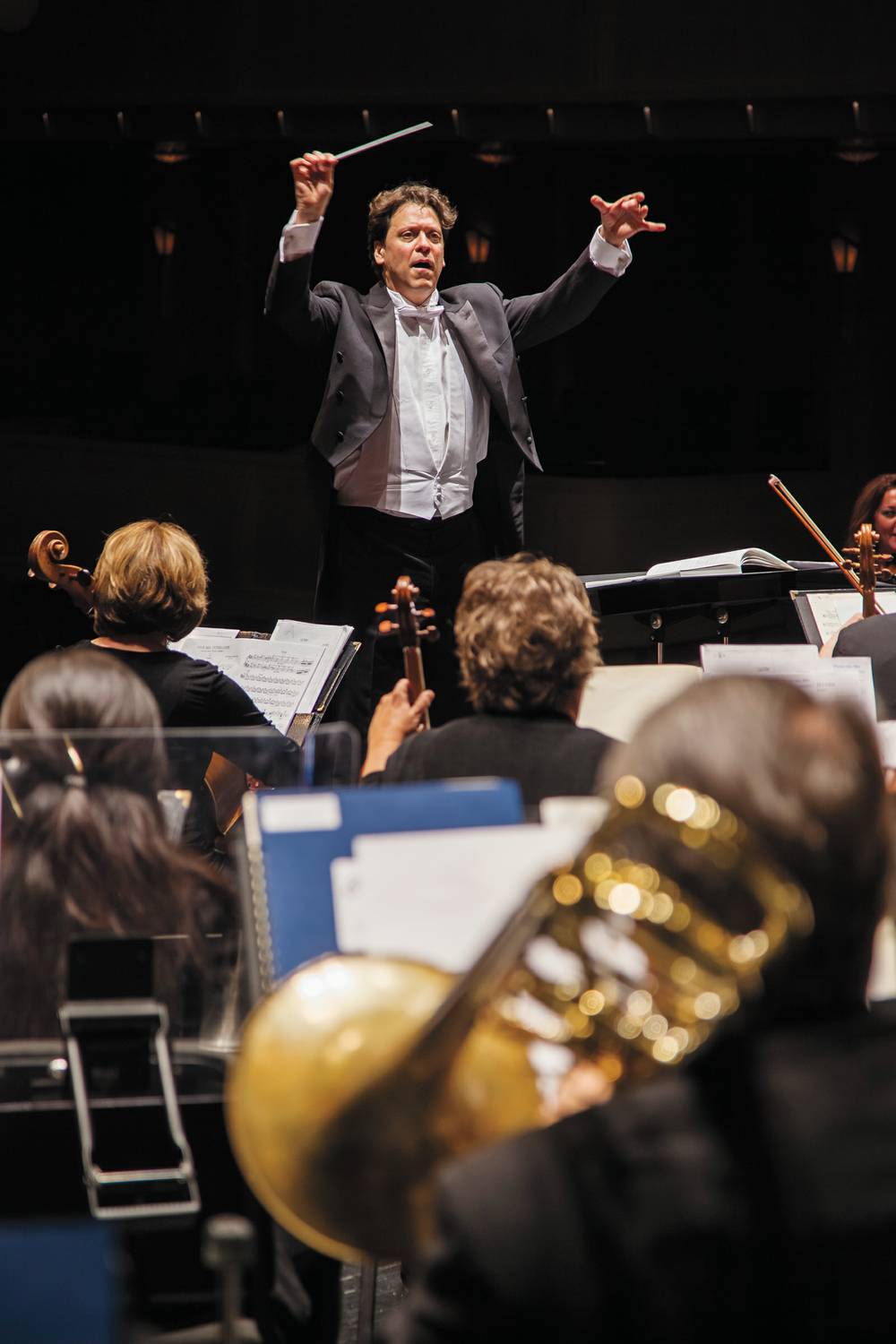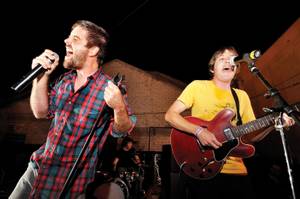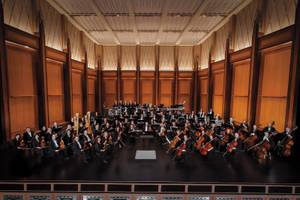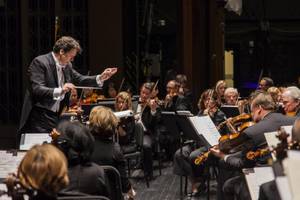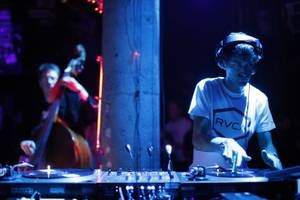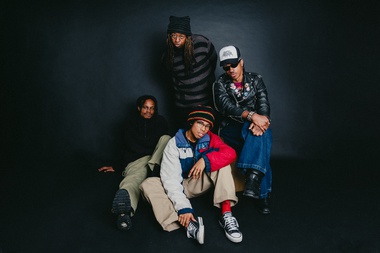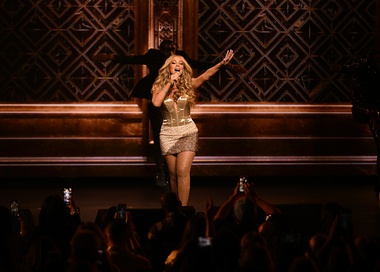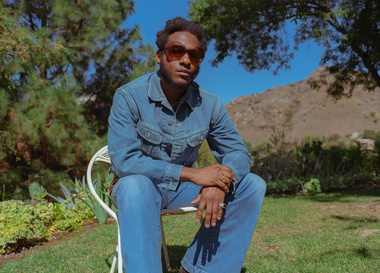It’s March 20, 2011, and composer Mason Bates, known for incorporating techno into his orchestral works, is playing an electric drum pad and laptop onstage at the Sydney Opera House with the international YouTube Symphony. It’s the world premiere of his work, “Mothership,” and nearly 2 million viewers are watching the live broadcast online, a linking of classical music with 21st-century technology.
The Bay Area composer, recently appointed the Kennedy Center’s first composer in residence, is known for this kind of thing. He’s young, good-looking and, when not DJing nightclubs around San Francisco (as DJ Masonic), he’s writing and performing works for some of the world’s greatest symphonies. To fans, he’s essential to moving the symphonic world forward, that artist who crosses genres (and generations).
So it’s of interest to Las Vegas that when Bates and his laptop were premiering his “Mass Transmission” with the San Francisco Symphony in 2012, the guy waving the baton was Donato Cabrera, the Las Vegas Philharmonic’s new conductor, whose energy and enthusiasm have been so embraced by local audiences that 2015-16 season subscriptions more than quadrupled all of last season’s in the first five weeks.
Bates, of course, is on next season’s lineup, along with works by Philip Glass, D.J. Sparr and Dan Visconti. Their inclusion represents what Cabrera champions: new music, living composers, an evolving art form. But injecting fresh works into the programming with symphonies by Tchaikovsky, Rachmaninoff, Sibelius and Brahms is only part of the Philharmonic’s effort to rebrand. The orchestra has increased the number of performances next season from 11 to 19, presenting some programs over two days rather than one evening (including Sunday matinees). It will offer chamber music in the Smith Center’s Troesh Theater and a special engagement featuring genre-crossing “little orchestra” Pink Martini. And composer surveys will serially present symphonies, giving audiences “a real sense over a longer period of time of what this composer is all about.”
Then there’s the chance to mingle with Cabrera, who plans to continue inviting all of Reynolds Hall to Mundo restaurant for meetups after Saturday concerts, something he experienced while guest-conducting in Columbus, Ohio, in February. “I thought it was such a cool idea. This is such a great way to get the audience connected with the orchestra,” says Cabrera, who was selected to lead the Las Vegas Philharmonic last spring.
“We’re looking into all kinds of ideas, and he wants to be a part of it,” says Philharmonic President and CEO Jeri Crawford. “He’s very committed to this community, very committed to building this orchestra. And he’s lived here,” Crawford adds, referring to the conductor’s childhood in Las Vegas. “This is not unfamiliar territory.”
Cabrera’s connection to Southern Nevada played in his favor. He understands that Las Vegas is a different animal when it comes to performing classical music and building audiences, says concertmaster De Ann Letourneau. The city is relatively new. Many residents have lived here 10 years or less, and are often still loyal to the arts programs of the cities they’ve left, meaning Las Vegas doesn’t have the generations of cultural supporters that have proven paramount for symphonies in older cities.
Letourneau, who’s been with the orchestra since its famous last-minute launch on July 4, 1998 (when the Nevada Symphony Orchestra fell apart just before the holiday), says creativity, innovation and flexibility go a long way here. “Every orchestra across the country, from the top 10 down to the small orchestras, the ticket sales are dwindling. People aren’t caring as much.”
Some orchestras, she says, are out of touch with what the public wants. Elitist performers existing only at a distance in a concert hall are not as effective as musicians weaving themselves into the community through social, educational and cultural outreach. Cabrera has already introduced himself outside the hall by rehearsing with Las Vegas Academy musicians and the UNLV orchestra, and by giving talks to senior groups, bringing parts of the Philharmonic to those who can’t always attend concerts. Additionally, the Philharmonic’s new partnership with the Boys & Girls Club brought 20 kids to a Friday-night rehearsal where they met the musicians then attended a concert the next night, part of an ongoing initiative.
And while the conductor—who is also resident conductor of the San Francisco Symphony and music director of the San Francisco Symphony Youth Orchestra, the California Symphony and the New Hampshire Music Festival—remains loyal to excellence, he also relishes in such moments as an audience member yelling “Yeehaw!” during a performance from Aaron Copland’s Rodeo. “I want to break down all of these walls,” Cabrera says. “I want them to feel they can go to a Philharmonic concert just as easily as a Lady Gaga concert.”
In that vein, the Philharmonic introduced itself to new listeners in a Beatles tribute with Cirque performers during last year’s Life Is Beautiful festival. While it doesn’t necessarily mean those spectators will turn out for a Brahms concerto, “it’s visibility,” Cabrera says.
Connecting with the community is personal for him. In 1959, his mother’s parents moved to Las Vegas. His mother and father met at UNLV. Cabrera, who lived here until he was 10 before moving to Northern Nevada, says he has always wanted to find a way to come back to Las Vegas. “I still have family that lives in Las Vegas, so from the very beginning it was a sense of homecoming and intrigue,” he said when we first spoke a year ago. “I feel very connected to Nevada, and I’ve always felt that at one point in my life I’d be able to have a connection to it other than just a familial one.”
This new connection also means highlighting the talents of the orchestra beyond the usual programming. Letourneau will be the soloist in Brahms’ Violin Concerto in March. Principal clarinet Cory Tiffin will be showcased in Leonard Bernstein’s Prelude, Fugue, and Riffs in April. There is also the world premiere of “Desert Flight,” commissioned by the orchestra and composed by principal trombone Nathan Tanouye. Cabrera believes that the chamber music series will also spur engagement: “Chamber music repertoire is really chosen by the musicians of the orchestra. There is a real sense of ownership, involvement in the artistic process.”
Of the orchestra, Cabrera says that its “wonderful willingness” to work with 17 different conductors during and after the Philharmonic’s search, including last season, is a great testament to the musicians’ abilities. Now that he’s settled in, they can move forward together with a singular vision.
As for the new music, Letourneau says the trust in Cabrera in learning unfamiliar material transfers into the war horses, including a recent Tchaikovsky performance that was preceded by John Adams’ “The Chairman Dances,” a contemporary piece from the opera Nixon in China.
“We’ve played Tchaikovsky 5 before. The difference was astronomical,” she says. “He’s a teacher at heart, and he wants to teach us how to be a better orchestra.”
Spotlight on next season
Commission: “Desert Flight” by composer and principal trombonist Nathan Tanouye, who has lent his talent to Sante Fe and the Fat City Horns, Strip productions and artists from Natalie Cole and Barbra Streisand to Usher. November 21.
Symphonies: Brahms, Symphony No. 2 (September 12); Sibelius, Symphony No. 1 (November 21); Rachmaninoff, Symphony No. 2 (January 9 & 10); Mozart, Symphony No. 38 (March 5); Tchaikovsky, Symphony No. 6 (May 21 & 22).
Works by living American composers: Dan Visconti’s “Breakdown” (September 12); Mason Bates’ “Devil’s Radio” (January 9 & 10); Philip Glass’ “Company” (March 5); D.J. Sparr’s “Dreams of the Old Believers” (May 21 & 22).
Pink Martini: The elegant and sophisticated “little orchestra” from Portland crosses genres—Latin, jazz, classical, pop and lounge (yes, lounge)—and will take the stage with the Philharmonic for a special engagement. February 6.
Guest soloists: pianist Andrew Tyson (September 12); violinist Alexi Kenney (November 21); pianist Martina Filjak (January 9 & 10); pianist Andrew Armstrong (April 2 & 3); cellist Oliver Herbert (May 21 & 22); Broadway’s Alexandra Silber (June 4).
